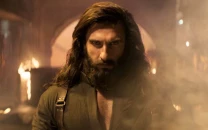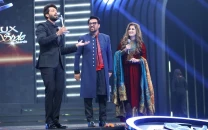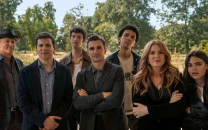Priest: Vampire weekend
Priest trots along at a decent pace and is a decent Sunday-afternoon-at-the-cinema fare.

The film is based on Korean graphic novels (and possibly a dozen other films) and is about a world in which humans have finally defeated vampires, forcing them to live out their miserable eternal lives in what look like giant Nazi underground bunkers. Of course, giant underground bunkers can get boring, and so the vampires have begun to venture out again, attacking humans and kidnapping a young girl from her home. This girl’s uncle is a Priest — one of the team who finally defeated the vampires in the first place — and he sets out in search for her. No need to explain this any further, because what follows is basically an extended chase sequence.
The Priests were once expert assassins with special powers, discovered by the Church and trained to wipe out vampires. With the end of the vampire menace, they were forced into routine life in the cities, so essentially, the Priests are like Buffy, only religious, retired and not in the least bit funny. But to give them credit, Buffy never had crucifixes that rose out of a dummy Bible and turned into throwing stars — so much cooler than a basic wooden stake.
Paul Bettany and Maggie Q play the two priests who are trying to save the young girl — and so the world — but before they foil villain Black Hat’s (played by Karl Urban) nefarious plan, they have enough time to establish a potential love interest. It’s unnecessary and feels a bit forced, but fortunately the film does not linger too long on it. Before you know who loved whom when, you’re back to speeding motorbikes, explosives and squelchy vampires.
The world of Priest is a strange mélange of steampunk, the Old West and Blade Runner. The fortress like cities with their reliance on electricity (their confession booths are essentially Skype sessions with a pre-recorded response system) may be reminiscent of Ridley Scott’s dystopian classic, but then there are standard steampunk elements like goggles and railway trains thrown in to this gritty mess. Outside the cities, society seems to have reverted to the 19th century Wild West, with dust bowl towns and sheriffs with double-barreled guns.
Vampires are always a hit, sparkly or otherwise, but these ones aren’t appealing: they’re slimy, eyeless and have the sex appeal of an earthworm. The complete control of ‘The Church’ should be threatening, but this church is almost a cliché, full of old men who are afraid to admit their mistakes. The apocalypse itself is confusing. White ash has fallen from the sky, the earth is irradiated, everything is just filthy and everyone is poor, but there is no explanation: what caused the fallout? When in time is this? Why are we asking so many questions when Paul Bettany has already moved on with the thrust of a ‘nitro boost’ button on his motorbike?
Priest is a straightforward film which doesn’t ask its audience to think too much. The CGI is strong, which isn’t surprising given the director’s prior experience in visual effects, and the breakneck pace at which it moves, make the gaps in the story almost unnoticeable.
Published in The Express Tribune, Sunday Magazine, June 12th, 2011.












1726134115-0/BeFunk_-(41)1726134115-0-208x130.webp)






COMMENTS
Comments are moderated and generally will be posted if they are on-topic and not abusive.
For more information, please see our Comments FAQ